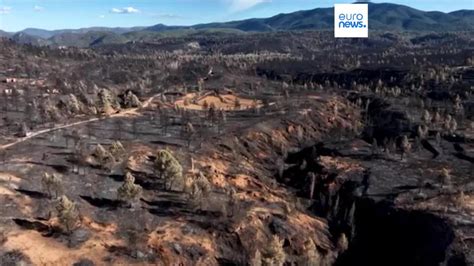—
Living on the Edge: America’s Wildfire-Prone Areas
In the midst of fierce winds and months-long drought, Los Angeles found itself battling catastrophic wildfires. However, these disasters were not solely a result of nature’s fury. The rampant expansion of housing in and around fire-susceptible terrains played a pivotal role in exacerbating the situation.
The majority of the homes ravaged by the flames were situated within or close to hillsides blanketed with highly flammable vegetation. Surprisingly, even densely populated urban neighborhoods like Altadena were not immune, as embers carried from nearby burning hills posed a significant threat.
Expert forest ecologists have noted a concerning trend across California and beyond – more Americans are flocking to areas at high risk of wildfires, particularly regions where urban developments encroach upon forests, grasslands, and shrub lands. This surge in growth within what experts term the “wildland-urban interface” has significantly raised the likelihood of destructive infernos, especially amid escalating climate change-induced wildfires.
The Expansion Challenge: In Numbers
Research led by Volker Radeloff from the University of Wisconsin-Madison revealed a startling statistic – between 1990 and 2020, California witnessed a 40% surge in homes located in fire-prone zones. This figure starkly contrasts with only a 23% increase in residences nestled within less susceptible areas like downtown cores.
Today, over 16 million homes dot the wildland-urban interface across Western states alone. Tragically, when wildfires rage through these territories where human habitation meets untamed wilderness, devastation swiftly follows. Recent events like the Palisades Fire underscore how quickly blazes can engulf upscale neighborhoods built perilously close to natural combustible landscapes.
Understanding the Risk:
Dr. Radeloff highlighted an unsettling truth – most wildfire ignitions stem from human activities rather than natural causes. From discarded cigarettes to machinery sparking dry vegetation alight, man-made triggers dominate wildfire origins.
The repercussions are manifold; not only do fires endanger more lives due to increased residential presence near forests and grasslands but also strain firefighting resources tasked with taming blazes amidst challenging topographies.
The Price We Pay for Progress:
The recent conflagrations that ripped through Los Angeles bore witness to another contributing factor – aging infrastructure ill-equipped to withstand modern fire threats. While Pacific Palisades’ historic homes had avoided harm during past fires thanks to effective land management practices like cattle grazing that kept flammable growth at bay over decades; changes in land usage have allowed vegetation density to burgeon unchecked.
Coupled with prolonged drought conditions and fierce Santa Ana winds reaching hurricane strength levels due to eight months without rain; communities once shielded by natural firebreaks found themselves defenseless against nature’s wrath.
A Path Towards Coexistence:
As Andrew Rumbach from Urban Institute aptly put it – we must embrace wildfires as an inevitable reality and learn to coexist harmoniously with them. Enhancing home resilience against ember intrusion via wind-proof construction methods and creating defensible spaces devoid of flammable undergrowth around properties emerge as critical steps forward.
California has taken strides by imposing stringent regulations mandating fire-resistant materials for new constructions in high-risk zones since 2008 while also advocating for defensible perimeters around properties as buffers against encroaching flames.
Moreover…




Leave feedback about this